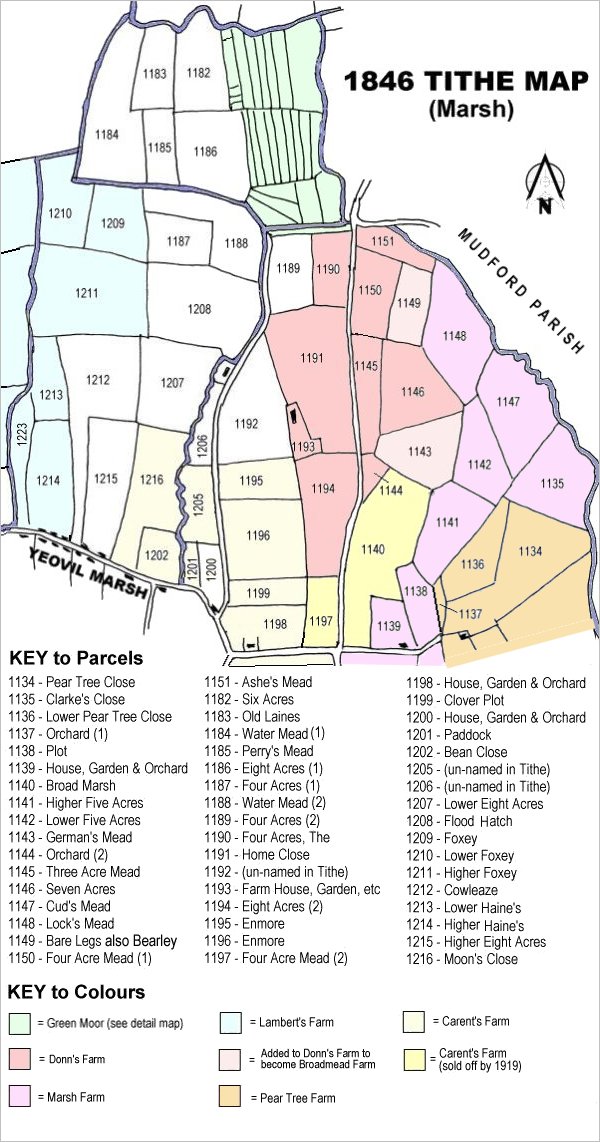Hartwell's Farm
An
early farm in
Yeovil Marsh
Hartwell's Farm
(also Hartwill)
was located in
Yeovil Marsh and
flourished
at least as early as the
sixteenth-century.
The
1569
'Certificate of
Musters' for
the 'Tithing of
Marshe' recorded
one Ableman
(that is, an
able-bodied man
fit for military
service) William
Hartwill, who
was recorded as
a Billman in the
local militia.
The
bill,
also
billhook,
was a
polearm
weapon
used by
infantry.
It had a
hooked
blade on
the end
of a
long
staff. A
Billman,
therefore, was an
infantryman
who
carried
a bill
as his
main
weapon.
The
1589 Terrier
recorded
Hartwell's Farm
as; "Of all his
Farm by
Estimation 60
Acres, Viz - of
Meadow 12 Acres
of arable 20
acres of Pasture
28 Acres, Except
of two closes of
Meadow by
Estimation 10
Acres lying on
the West part of
his House and of
3 Acres or
thereabouts
lying on the
West part of his
close of Pasture
which lieth
above Madcraft
and one and half an
Acre in the
lower end of the
same Close...
There are lying
within the said
circuit of Marsh
of old pasture
ground two
closes called Foxleaze and
Flippenpits,
alias
Sixmenleaze by
estimation 80
acres."
The
1589 Terrier
described
Foxyleaze "in Mr
Williams' Estate
twenty-four
acres of
pasture". It was
part of
Hartwell's Farm
and would later
(by 1846)
be split into
Foxey
(Parcel 1209),
Lower
Foxey
(Parcel 1210)
and
Higher
Foxey
(Parcel 1211).
These are the
only known
recorded fields
forming a part
of Hartwell's
Farm, although
there were
certainly
others. The farm
was renamed
Lambert's Farm
by the end of
the sixteenth
century.
According to
title deeds held
in the Taunton
Heritage Centre,
several
tenements in
Yeovil Marsh,
including
Hartwell's Farm
and Marsh Farm,
passed to the
Bellamy family
in 1741.
Nothing
further is known
of Harwell's
Farm.
For details on
historic land
measurement (ie
acres, roods and
perches)
click here.
gallery

